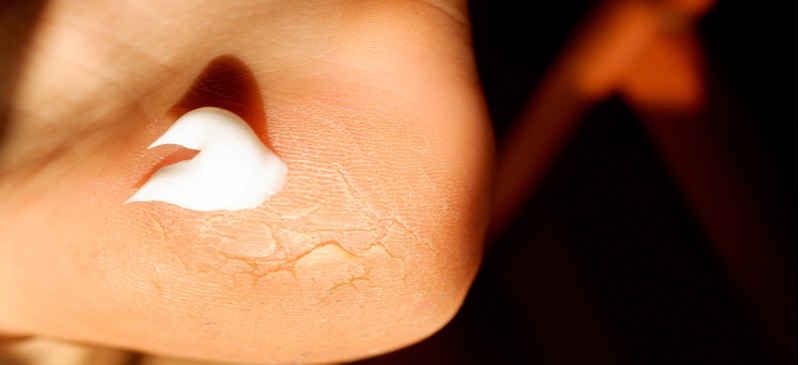This Dr. Axe content is medically reviewed or fact checked to ensure factually accurate information.
With strict editorial sourcing guidelines, we only link to academic research institutions, reputable media sites and, when research is available, medically peer-reviewed studies. Note that the numbers in parentheses (1, 2, etc.) are clickable links to these studies.
The information in our articles is NOT intended to replace a one-on-one relationship with a qualified health care professional and is not intended as medical advice.
This article is based on scientific evidence, written by experts and fact checked by our trained editorial staff. Note that the numbers in parentheses (1, 2, etc.) are clickable links to medically peer-reviewed studies.
Our team includes licensed nutritionists and dietitians, certified health education specialists, as well as certified strength and conditioning specialists, personal trainers and corrective exercise specialists. Our team aims to be not only thorough with its research, but also objective and unbiased.
The information in our articles is NOT intended to replace a one-on-one relationship with a qualified health care professional and is not intended as medical advice.
Urea Cream Benefits Dry, Cracked Skin & More
December 4, 2023

If you have dry, rough or even cracked skin, chances are you’ve tried urea cream or a product containing the component. If not, this may be the ingredient that finally helps to get your skin the hydration it needs.
For more than a century, urea has been used clinically for dermatological diseases, but what exactly is urea cream? It may sound strange (or even a little gross), but it’s actually a waste product. It’s produced naturally in the skin to keep hydration balance.
Synthetic urea is used in a range of dermatological creams and ointments. For skin care, it’s known as one of the best ways to get rid of xerosis, or extremely dry skin, and other serious skin issues.
What Is Urea Cream?
Urea is a naturally occurring waste product that’s produced on the skin when the body breaks down proteins. It’s a component of the epidermis that plays an important role in the maintenance of skin hydration.
Urea is part of the skin’s natural moisturizing factor, which involves several components that keep hydration balance in the most outer layers.
It’s actually the major organic component of urine, but it’s also found in sweat, blood and human milk.
Synthetic urea is manufactured for topical creams and skin care products. Although our skin already contains urea, creams and gels containing the component are made and used topically to soften dry, cracked skin.
Types
There are different concentrations of urea cream available for topical use. In dermatology, formulations containing urea have been used in a concentration-dependent manner to restore skin hydration.
Urea products, which are available with a prescription and over-the-counter, are labeled with the percentage of urea that’s present in the formula. The most common types include:
- Urea 2 cream: This is a lower dose of the component, so it’s ideal for someone who is simply looking to moisturize dry areas of skin.
- Urea 10 cream: This is also considered a lower dose option and can be used to relieve very dry skin or athlete’s foot. When using an over-the-counter product, it’s best to start with lower percentages of urea first to avoid adverse side effects. This concentration is the most popular over-the-counter product.
- Urea 20 cream: Urea 20 is also available over-the-counter and is used in skin and body products. It helps treat dry and rough skin conditions, like eczema. Plus, it’s useful for ingrown nails, fighting infections and wound healing.
- Urea 40 cream: This is known as the best urea cream for extremely dry, rough or cracked skin. It’s also used for several skin conditions. Urea 40 is often combined with prescription compounds, like topical anti-inflammatory steroids or antifungal drugs, to treat serious dermatological conditions.
Benefits
Research shows that urea cream is an effective dermatologic therapy with wide-ranging clinical use and non-systemic side effects, including the following.
1. Powerful Moisturizer
We naturally produce urea in order to enhance hydration in the skin, so it makes sense that it can be used as a moisturizer for problematic areas. When applied topically, it hydrates the area and enhances skin integrity. It also serves as a protective barrier.
Research shows that lower doses of urea-containing products, like those with 10 percent urea or less, act as skin moisturizers. Higher concentrations promote the breakdown of dead skin with its keratolytic actions.
2. Soothes Skin
Urea acts as an emollient that soothes and softens the skin. It helps improve rough patches, flaking and extreme dryness.
Studies indicate that urea creams can help soothe skin issues, including atopic dermatitis, psoriasis and xerosis.
Products containing urea can also work as anti-wrinkle creams because they help hydrate and soothe problematic areas.
3. Removes Rough Skin
Urea topicals are able to penetrate even very thick, dry skin and break down rough surfaces that are caused by dead skin cells. Researchers have found it to be a keratolytic agent, which means that it works to shed the outer layer of skin, thereby promoting softness.
This makes it a good tool for cracked hands and feet, foot calluses and corns, and dryness related to psoriasis or eczema. It also helps break down thick nails that are misshapen and need to be cut. It does this by penetrating the nail and softening it.
4. Enhances Absorption
Urea acts as a humectant. Humectants have been shown to retain moisture from the air and environment to bring it into the skin. This helps hydrate the skin and reduce extreme dryness.
Humectants are often used in skin care products, from lotions and creams to soaps and shampoos, in order to pull moisture from the second layer of skin to the surface. This increases the overall levels of moisture in the skin layers.
5. Fights Infections
Urea has been shown to have antifungal effects, which is why it’s often used topically to fight foot and nail fungus. It has also proved to provide antimicrobial defense.
One study published in the Journal of Investigative Dermatology found that topical urea applications normalized barrier function, helping to protect the skin and antimicrobial peptide expression.
How to Use
When using urea cream, it’s best to start at a lower concentration, such as urea 5 or urea 10. This allows you to see how your skin reacts, and you can increase the concentration if you don’t see results and don’t experience any adverse effects.
Use it like any other hydrating ointment or lotion, applying a thick coat to the areas of concern. This can be done twice daily, morning and night, or as directed by your dermatologist.
If you don’t see results from lower, over-the-counter concentrations, then speak to your dermatologist about a prescription or safe ways to use high-dose creams that are available in stores.
Risks and Side Effects
Using a highly concentrated urea product may cause side effects, such as irritation, burning and itching. Urea 40 may break down skin cells in rare cases, so discontinue use it that occurs.
Do not use urea close to your eyes, nose or mouth, as it may cause irritation. It also should not be applied to open skin or cuts.
If you experience any serious side effects, consult your dermatologist immediately.
Conclusion
- Urea is a naturally occurring waste product that’s produced on the skin when the body breaks down proteins. It plays an important role in the maintenance of skin hydration, so it makes sense that urea is used to relieve very dry skin.
- Synthetic urea is manufactured for topical creams and skin care products. It comes in several concentrations, with products containing 40 percent urea typically prescribed by a dermatologist.
- Lower concentrations are available over-the-counter and can be used to relieve issues, including dry, cracked skin, psoriasis, eczema, atopic dermatitis, athlete’s foot, foot callus and more.





